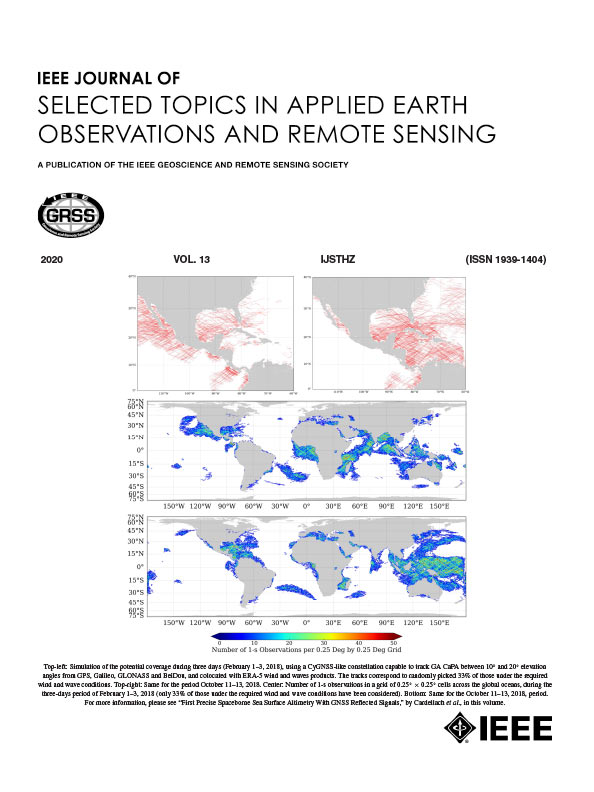FADet: A Frequency-Aware Detection Framework for Infrared Small Target Detection
IF 5.3
2区 地球科学
Q1 ENGINEERING, ELECTRICAL & ELECTRONIC
IEEE Journal of Selected Topics in Applied Earth Observations and Remote Sensing
Pub Date : 2025-09-17
DOI:10.1109/JSTARS.2025.3611492
引用次数: 0
Abstract
Infrared small target detection (IRSTD) remains a critical yet highly challenging task in the field of object detection. Due to the tiny target size and the absence of rich texture information, general-purpose detectors often suffer substantial performance degradation when applied to this task. This performance degradation is mainly due to their limited ability to extract discriminative features, resulting in frequent missed detections and false alarms that compromise the reliability of detection systems. To address these challenges, we proposeFADet:一种频率感知的红外小目标检测框架
红外小目标检测(IRSTD)是目标检测领域的一项关键而又极具挑战性的任务。由于目标尺寸小,缺乏丰富的纹理信息,通用检测器在应用于该任务时往往会出现严重的性能下降。这种性能下降主要是由于它们提取判别特征的能力有限,导致频繁的漏检和误报,从而损害了检测系统的可靠性。为了应对这些挑战,我们提出了FADet,这是一种新颖的频率感知检测框架,专门用于捕获小目标的独特表征特征。具体来说,我们引入了一个频率导向视觉编码器,它利用哈尔小波变换将空间特征明确地分解为高频和低频分量。然后从高频成分衍生出一个注意掩模,以选择性地保留信息丰富的细粒度细节。该过程有效地缓解了卷积运算通常引起的过度平滑效应,从而显著提高了小目标在检测框架中的显著性。此外,我们提出了一个多尺度特征收集-分布模块,该模块将多尺度语义线索聚合并在不同的特征层次上重新分布,从而实现更有效的特征交互和融合。在三个公共基准数据集(如NUAA-SIRST, NUDT-SIRST和irstd - 1k)上进行的大量实验表明,FADet取得了卓越的性能,在红外小目标检测方面取得了新的最新成果。
本文章由计算机程序翻译,如有差异,请以英文原文为准。
求助全文
约1分钟内获得全文
求助全文
来源期刊
CiteScore
9.30
自引率
10.90%
发文量
563
审稿时长
4.7 months
期刊介绍:
The IEEE Journal of Selected Topics in Applied Earth Observations and Remote Sensing addresses the growing field of applications in Earth observations and remote sensing, and also provides a venue for the rapidly expanding special issues that are being sponsored by the IEEE Geosciences and Remote Sensing Society. The journal draws upon the experience of the highly successful “IEEE Transactions on Geoscience and Remote Sensing” and provide a complementary medium for the wide range of topics in applied earth observations. The ‘Applications’ areas encompasses the societal benefit areas of the Global Earth Observations Systems of Systems (GEOSS) program. Through deliberations over two years, ministers from 50 countries agreed to identify nine areas where Earth observation could positively impact the quality of life and health of their respective countries. Some of these are areas not traditionally addressed in the IEEE context. These include biodiversity, health and climate. Yet it is the skill sets of IEEE members, in areas such as observations, communications, computers, signal processing, standards and ocean engineering, that form the technical underpinnings of GEOSS. Thus, the Journal attracts a broad range of interests that serves both present members in new ways and expands the IEEE visibility into new areas.

 求助内容:
求助内容: 应助结果提醒方式:
应助结果提醒方式:


